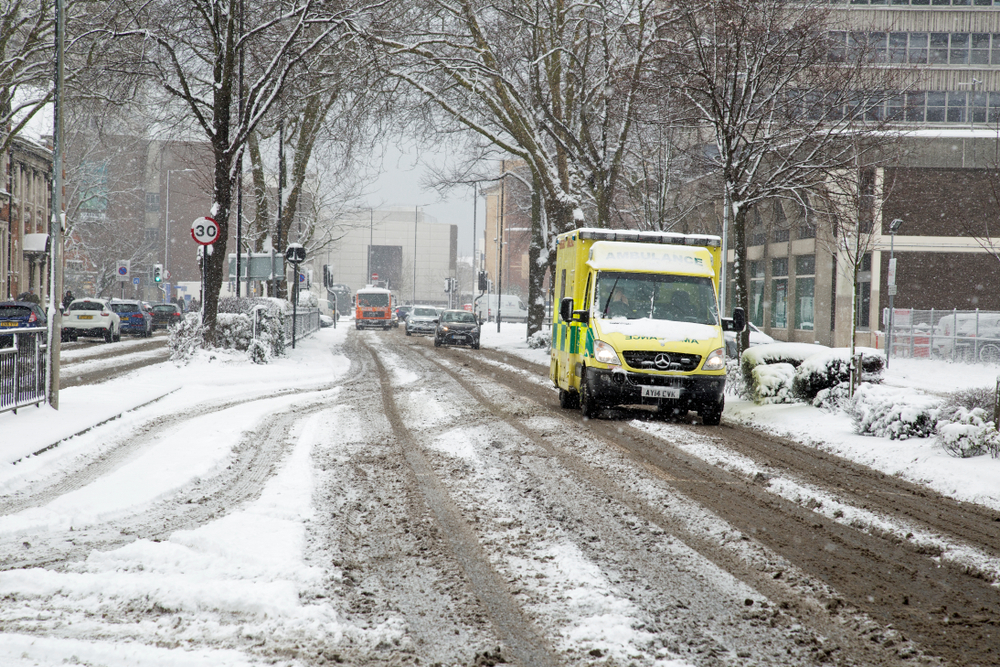A few days after midsummer NHS Providers is already keen to focus on the problems set to recur with winter this year.
It is urging health leaders not to draw false comfort from the noticeable absence of stories about ‘winter pressures’ in the media earlier this year.
A new briefing, The Real Story of Winter, argues that while preoccupation with Brexit has diverted attention away from other vital challenges, performance against key standards continue to show the NHS remains in “perpetual winter”.
Rising demand
It sets out the growing pressures facing our health and care services, and notes that:
“An analysis of NHS England and NHS Improvement shows a widening gap between the demand for care and the capacity of the service – in terms of staff and beds – to meet it.”
The key issue is that the NHS is now treating more patients than ever, as the population increases and the proportion of older people continues to grow.
Last winter:
- There were 6.1 million accident and emergency attendances, an increase of 5% from the previous winter and a 16% increase since 2014/15.
- On average, 66,300 people were being admitted in England each day over winter.
An earlier BMA report, NHS Pressures – Winter 2018/19 A hidden crisis, added further dramatic figures to illustrate the pressures on front line services and staff.
In particular during the 2018/19 winter:
- NHS hospitals admitted 1.62 million emergency cases, a rise of 6% from the previous winter and up by one in six (16%) since 2014/15.
- 4.3 million people are now waiting for elective treatment
- 3.9 million attending major A&Es. This represents a 6% increase on last year.
- There were 214,000 trolley waits over 4 hours recorded, and 1,465 of over 12 hours.
- 96% of trusts exceeded recommended occupancy levels.
Excluding 21st to 29th December, bed occupancy did not drop below 92% all winter. Croydon Health Services reported the highest average bed occupancy over the winter, with 99.6% of beds occupied, having been at 100% occupancy on most days over the winter
The total number of general and acute beds peaked at 98,826 this winter, down on 99,298 last year. [NHS figures show that in the winter of 2010-11 when the austerity regime first kicked in there were over 108,000.]
NHS Providers argue that the low profile of the issues in the media ignores a further deterioration:
“Despite much milder weather, with a less severe strain of flu, last winter saw the worst A&E performance against the four hour target since records began, and the poorest performance recorded against key cancer standards.
“Moreover, the elective care waiting list is at record levels, with more people waiting longer than the recommended 18 weeks for routine operations.”
New performance measure
Some of the comparative A&E figures will be impossible to compile this coming winter, since 14 NHS trusts are now testing out a new formula for measuring performance as ministers and NHS England try to escape the embarrassment of continued failure to deliver the promised 4-hour maximum waiting time.
But NHS Providers’ director of policy and strategy, Miriam Deakin said:
“We must ensure change is not recommended simply because the service is struggling to deliver existing targets.”
Dear Reader,
If you like our content please support our campaigning journalism to protect health care for all.
Our goal is to inform people, hold our politicians to account and help to build change through evidence based ideas.
Everyone should have access to comprehensive healthcare, but our NHS needs support. You can help us to continue to counter bad policy, battle neglect of the NHS and correct dangerous mis-infomation.
Supporters of the NHS are crucial in sustaining our health service and with your help we will be able to engage more people in securing its future.
Please donate to help support our campaigning NHS research and journalism.


